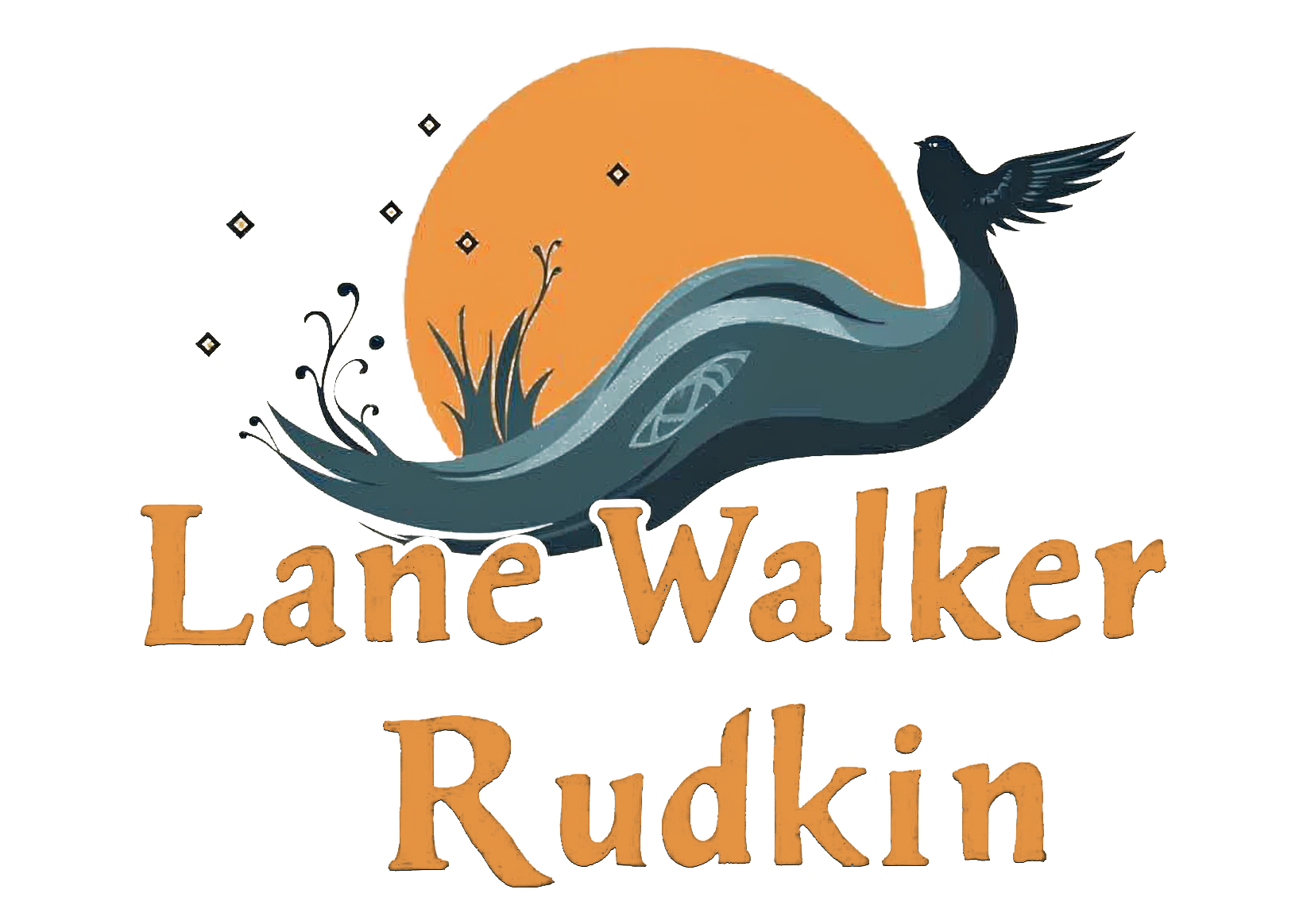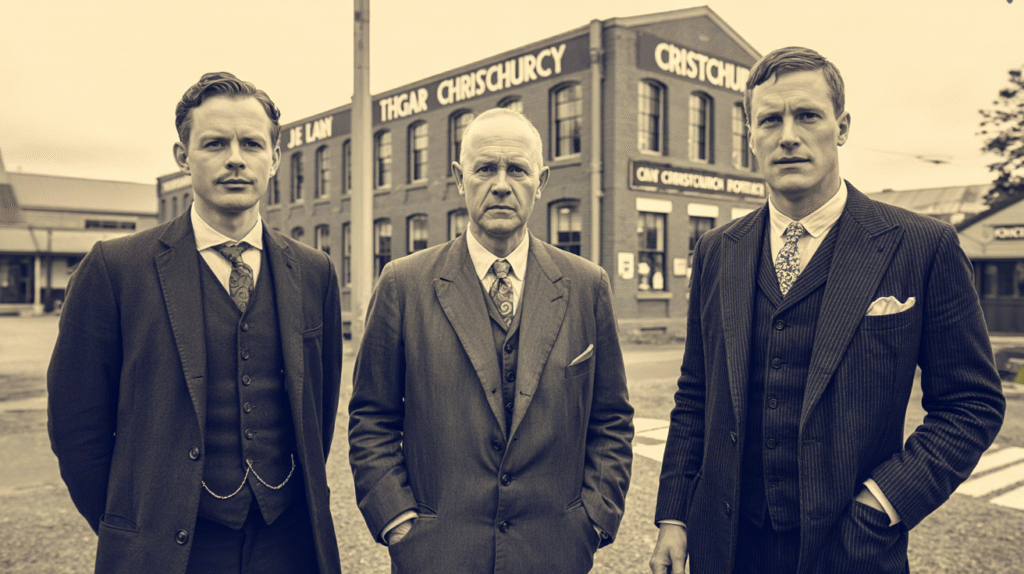
🏭 Introduction: What Was Lane Walker Rudkin?
Lane Walker Rudkin (LWR) was a New Zealand-based clothing and textile manufacturing company that operated for over 100 years. Headquartered in Christchurch, LWR was responsible for producing everything from school uniforms and underwear to military apparel and world-renowned sportswear.
Founded in 1904, the company was a pioneer in industrial-scale garment production in New Zealand, employing thousands across several sites and producing millions of garments worn across the country—and beyond.
LWR’s legacy is rooted not only in its impressive product range but also in its commitment to:
- Local manufacturing and employment
- Women in the workforce
- Craftsmanship at scale
- New Zealand’s national identity in apparel
🧵 From schoolyards to rugby fields, Lane Walker Rudkin garments were part of everyday life.
👨👨👦 Founders and the Name Behind the Brand
The company’s name comes from its three founders:
- John Lane – a businessman with strong ties to Canterbury commerce
- Edgar Walker – an experienced textile engineer
- James Rudkin – a skilled garment cutter and operations leader
Together, they created a vertically integrated enterprise that could:
- Spin and dye yarn
- Weave and knit fabric
- Cut and sew garments
- Package and ship from Christchurch across New Zealand
Their goal was clear: to build a New Zealand company for New Zealanders—reliable, affordable, and locally made.
🧬 Brand Values and Company Vision
Throughout its lifespan, LWR stood for a number of powerful values that resonated with the Kiwi public.
🇳🇿 1. New Zealand-Made Pride
LWR was one of the earliest adopters of a “Made in New Zealand” branding campaign, emphasizing:
- National independence
- Quality control
- Regional job creation
👩🏭 2. Fair Labor and Training
Well before global conversations around ethical labor, LWR:
- Offered in-house apprenticeships
- Paid consistent wages
- Promoted from within
- Employed generations of workers from the same families
🔧 3. Innovation Without Compromise
From dye houses to knitting machines, LWR embraced change, including:
- The introduction of synthetic blends
- Modernized production lines
- CAD-based garment design in the 2000s
🔁 4. Vertical Integration
Unlike many fashion companies that outsourced early, LWR controlled:
- Material sourcing
- Design
- Production
- Packaging and delivery
…ensuring consistency and lowering costs.
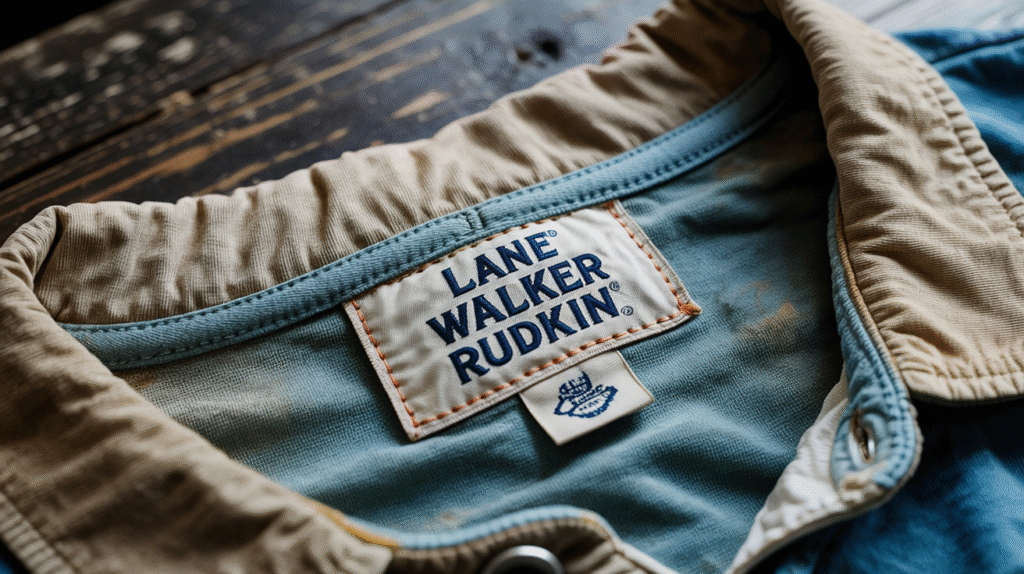
🧵 What Did Lane Walker Rudkin Produce?
LWR’s product catalog evolved with New Zealand’s needs, including:
| Product Category | Examples |
|---|---|
| Schoolwear | Skirts, trousers, polo shirts, blazers |
| Sportswear | Rugby, netball, cricket uniforms |
| Underwear & Thermals | Merino blend layers, socks, briefs |
| Corporate Uniforms | Hospitality, aviation, and police gear |
| Military Apparel | Field jackets, cold-weather layers |
| Casual Wear | Knitwear, shorts, t-shirts, cardigans |
By the late 1970s, nearly every New Zealander owned or wore an LWR garment—especially via school or sport.
📦 At its peak, LWR was producing over 500,000 garments per year.
🏉 Canterbury of New Zealand: A Star Subsidiary
No “About” section is complete without mentioning Canterbury of New Zealand, LWR’s most famous sub-brand.
Created as a rugby-focused sportswear label, Canterbury quickly grew into:
- The official kit supplier for the All Blacks
- A globally recognized brand in Australia, South Africa, and the UK
- A symbol of New Zealand excellence in sport
Though eventually sold off during LWR’s collapse, the brand’s origin in the Christchurch factory floor is a key part of its story.
🏆 Even today, sports teams wear the “CCC” logo—born from LWR’s innovation and reputation.
🗓️ Key Milestones in Lane Walker Rudkin’s Journey
Understanding Lane Walker Rudkin means understanding how it evolved over the decades. Here are some of the company’s most important milestones:
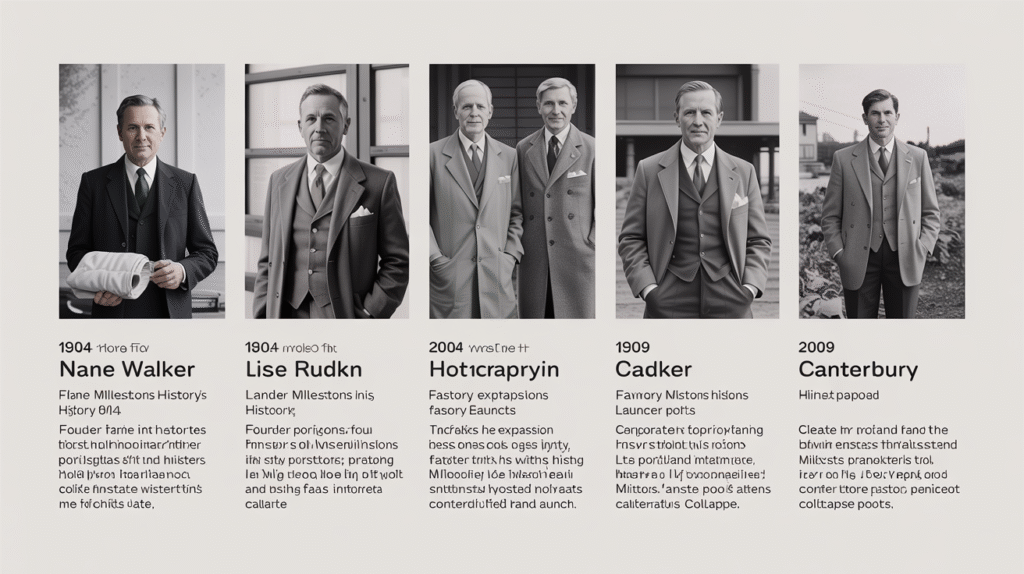
🧵 1904 – Foundation in Christchurch
John Lane, Edgar Walker, and James Rudkin open their first factory on Lichfield Street, producing hosiery and underwear for local markets.
🔼 1920s–1930s – Expansion and Product Diversification
LWR begins manufacturing outerwear and school uniforms. Establishes a strong reputation for consistency and durability.
🏭 1940s – World War II Contributions
Shifts much of its production to military clothing. Women take on new manufacturing roles. Workforce increases to meet wartime demand.
🧒 1950s – Entry into School and Institutional Uniforms
Secures long-term government contracts to produce:
- School uniforms
- Postal service attire
- Public health staff garments
🏉 1970s – Sportswear Explosion and Canterbury Brand
Launches the Canterbury of New Zealand brand, which becomes the official outfitter for the All Blacks. Enters global export markets.
🖥️ 1990s – Computerization and Globalization Pressure
Adopts CAD/CAM systems for apparel design and cutting. Begins exploring limited offshore production to stay competitive.
🏦 2000s – Ownership Change and Receivership
Changes hands several times, eventually collapsing in 2009. Ends over a century of legacy under the LWR name.
🧵 From three founders to thousands of workers, LWR’s story is one of vision, scale, and transformation.
🗺️ Geographical Growth: LWR Across New Zealand
Though headquartered in Christchurch, LWR expanded its footprint to multiple cities, serving not only as a manufacturer but also as a regional employer and infrastructure builder.
📍 Christchurch
- Headquarters and original production center
- Main cutting, sewing, dyeing, and admin departments
📍 Ashburton
- Known for knitwear and thermals
- High-speed knitting machines and woolen garment production
📍 Timaru
- Focused on outerwear and weather-resistant garments
- Served farming and utility sectors
📍 Levin
- Specialized in school uniforms and packaging
- Operated key logistics hub for distribution
🧳 These satellite factories allowed LWR to scale output while supporting local economies across the South Island and beyond.

🧠 LWR as a Pioneer in Apparel Technology
Lane Walker Rudkin wasn’t just about mass production—it was also an early adopter of textile innovation, both in process and product.
🧵 Fabric Development and Blends
- Introduced Merino blend thermals long before it became a trend
- Created anti-shrink and easy-care wool mixes for uniforms
- Partnered with material scientists for stretch-resistant sportswear
🖥️ CAD and CAM Integration
In the 1990s, LWR became one of the first New Zealand clothing firms to integrate:
- Computer-Aided Design (CAD) for pattern making
- Computer-Aided Manufacturing (CAM) for cutting precision
- Centralized digital inventory tracking for fabrics and components
These moves helped:
- Reduce waste
- Speed up product development
- Allow for greater customization across product lines
🧪 In-House Dyeing and Testing
LWR maintained its own dyeing facilities, allowing for:
- Exact color matching for institutional clients
- Faster turnarounds on custom orders
- Testing for fade resistance, moisture-wicking, and fabric durability
🔬 Their commitment to in-house quality control made LWR garments reliable even under extreme conditions, such as sports and military use.
👩🏫 Training the Next Generation
LWR invested heavily in skill development:
- Partnered with local polytechnics and trade schools
- Published internal manuals and ran regular workshops
- Trained over 1,000 machinists and garment technicians from entry-level to senior roles
This created a pipeline of skilled labor that benefitted the wider New Zealand garment industry, even beyond LWR.
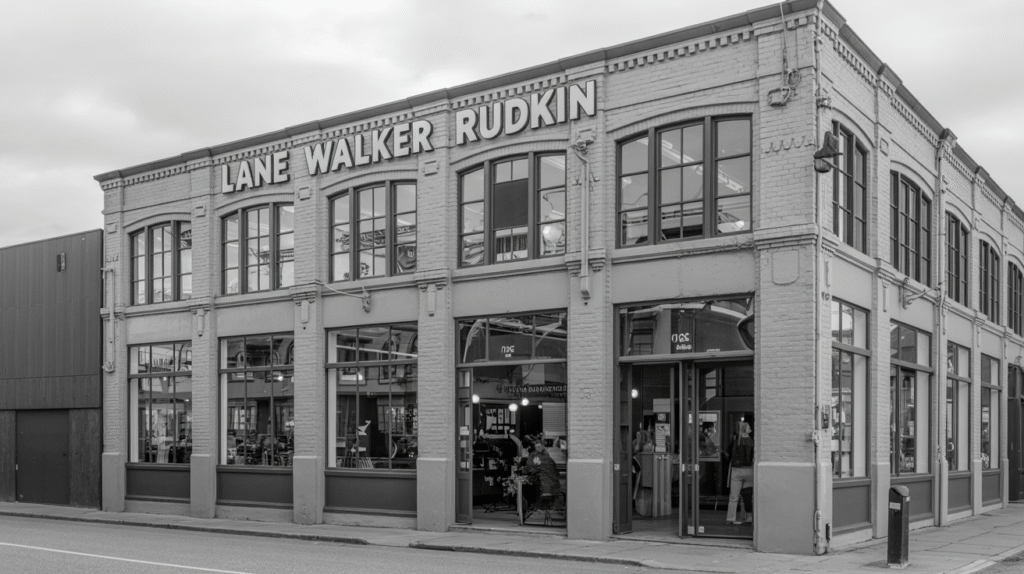
🧶 More Than Manufacturing: A Culture of Precision
What made Lane Walker Rudkin exceptional wasn’t just what it made—but how it made it.
- Meticulous attention to detail
- Emphasis on “first-time-right” production ethics
- Structured feedback loops between design, production, and quality control
- Weekly meetings where workers could offer design and workflow suggestions
This culture of collaboration and precision ensured that LWR products stood the test of time—and became synonymous with quality you could wear.
👩🏭 A Social Force: Lane Walker Rudkin and Women in the Workforce
One of the most powerful and enduring aspects of Lane Walker Rudkin was its role in empowering women economically and socially—long before inclusion became a corporate buzzword.
🧵 Generational Female Employment
LWR was among the first major manufacturers in New Zealand to actively recruit and retain female workers across departments, including:
- Sewing and cutting
- Logistics
- Dye house operations
- Pattern development
- Supervisory and planning roles
Mothers, daughters, and grandmothers often worked side by side, creating tight-knit communities within each LWR location.
🧶 For many families, “my mum worked at LWR” wasn’t just a statement—it was heritage.
🏫 Skills and Education for Women
LWR didn’t just employ women—it trained them to lead. The company:
- Offered in-house apprenticeships
- Promoted women to floor managers and training officers
- Sponsored education programs in partnership with local polytechnics
It provided an alternative to domestic service or retail, allowing women to build careers, gain independence, and earn reliable wages.
💬 Workplace Culture
Unlike the rigid top-down management styles of many manufacturing firms of the time, LWR encouraged:
- Open floor communication
- Staff appreciation events
- Suggestion boxes that were actually acted upon
- Holiday celebrations and family-friendly policies
The result? High job satisfaction and remarkable employee loyalty, with many working for 20–40 years.
🧠 Brand Philosophy: What Lane Walker Rudkin Stood For
Beyond threads and seams, LWR stood for something deeper. It was a company with principles stitched into its products.
🧷 1. Durability Over Hype
While fashion trends changed with seasons, LWR stuck to its principle of:
- Building clothing that lasted
- Prioritizing fit and fabric quality
- Avoiding excessive marketing or gimmick branding
🧥 “Buy it once, wear it for years” — that was the unspoken promise of an LWR label.
📦 2. Service to Institutions
LWR focused on institutional reliability—delivering to:
- Schools
- Military
- Police departments
- Airlines and corporates
- Sports organizations
It valued long-term contracts over flash-in-the-pan retail sales.
🧩 3. Seamless Supply Chain Integration
The company believed in controlling its entire supply chain to:
- Ensure consistent quality
- Reduce reliance on imports
- Keep jobs in New Zealand
- Build strong vendor relationships with local businesses
🌍 4. Ethical Production
Although terms like “ethical fashion” were not mainstream in the 20th century, LWR practiced them anyway by:
- Paying fair wages
- Offering career progression
- Encouraging union involvement
- Sourcing materials responsibly
🌐 LWR in the Global Marketplace: A Kiwi Standard
Lane Walker Rudkin may have been a domestic powerhouse, but its global influence—especially through Canterbury of New Zealand—cannot be overstated.
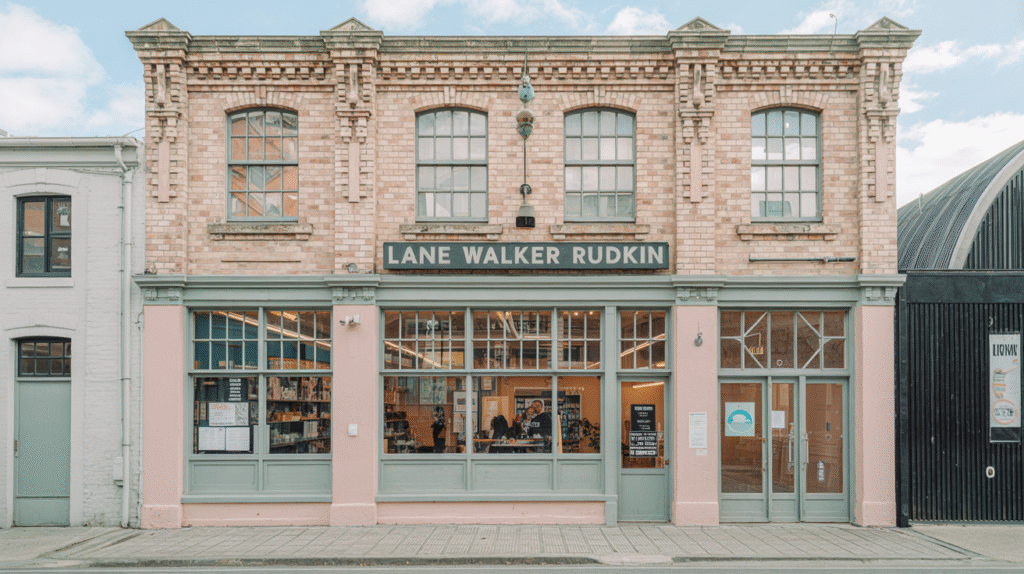
🏉 The Rugby Connection
Through Canterbury, LWR exported sports kits to:
- Australia
- South Africa
- The United Kingdom
- Ireland
- Pacific Island nations
The “CCC” brand became a hallmark of durability and performance—attributes that originated in Christchurch sewing rooms.
🧵 Why International Buyers Trusted LWR
| Feature | Advantage |
|---|---|
| Made in NZ | Higher perceived quality |
| Vertical production | Reliable timelines |
| Institutional references | Built-in credibility |
| Classic designs | Global appeal |
| Rugged construction | Ideal for sport and school |
📈 Export Expansion and Challenges
Though LWR faced increasing competition from offshore low-cost producers in the 1990s and 2000s, it managed to:
- Secure niche markets in quality-focused buyers
- Create heritage product lines
- Expand into branded retail for Canterbury before its eventual sale
🧭 The Legacy of Lane Walker Rudkin: Why It Still Matters
Though Lane Walker Rudkin officially ceased operations in 2009, its impact continues to resonate across New Zealand—particularly in Christchurch and Canterbury.
It left behind more than uniforms, patterns, and production equipment. LWR shaped:
- National pride in locally made goods
- Workforce culture centered around dignity and growth
- Industrial heritage that still informs today’s garment sector
- A deep-rooted emotional connection between people and product
🧶 To this day, wearing an old LWR-made jersey or finding a vintage label in a thrift store evokes a sense of trust and nostalgia.
🏛️ Preservation of the LWR Story
Recognizing the historical and cultural value of the company, several initiatives have ensured that Lane Walker Rudkin’s story is remembered and studied.
🧳 Museum Exhibits
The Canterbury Museum, Ashburton Museum, and Otago Settlers Museum have preserved:
- Garments, tools, and production equipment
- Product catalogs, packaging, and branding
- Employee ID cards and internal newsletters
- Dye samples and fabric swatches
Temporary exhibitions have focused on:
- Women in industry
- Christchurch’s manufacturing boom
- New Zealand’s role in global sportswear production
🎙️ Oral Histories
Several universities and local archives have recorded first-hand accounts from former employees, covering topics like:
- Day-to-day factory life
- Working during World War II
- The community built around the lunchroom
- Reactions to the collapse of the business
These interviews are publicly accessible and serve as living documents of New Zealand’s labor history.
🧱 Factory Repurposing
Former LWR buildings in Christchurch and Ashburton have been creatively reused as:
- Creative studios
- Co-working spaces
- Artisan markets
- Community event venues
This approach preserves the physical footprint of LWR while allowing modern communities to thrive in historic spaces.
🎓 Educational and Business Lessons
In business schools and industrial design programs, Lane Walker Rudkin is now a case study in both success and caution.
📘 What Students Learn:
| Lesson | Why It Matters |
|---|---|
| Vertical integration | Benefits of internal control vs. outsourcing |
| Ethical labor | Social sustainability before it was mainstream |
| Global pressure | Navigating offshoring without losing identity |
| Collapse risk | Dangers of over-leverage and poor governance |
In design programs, LWR’s blend of function and form is studied as a model of practical aesthetics—especially in uniform and performance wear.
🧶 LWR in Pop Culture and Collector Circles
In recent years, LWR’s vintage garments—especially from Canterbury of New Zealand—have become highly collectible.
- Early All Blacks kits
- 1980s netball uniforms
- Retro track jackets
- Military thermals
These pieces are resold globally and often featured in fashion retrospectives, illustrating how LWR’s appeal extended far beyond function—it captured an era.
💬 Final Thoughts: A National Thread Worth Remembering
To understand Lane Walker Rudkin is to understand:
- The power of manufacturing to shape a culture
- The role of apparel in expressing identity
- How community-centered business models can last generations
- Why preserving industrial history matters to the future of work
Though the company is gone, the people, products, and purpose behind Lane Walker Rudkin continue to inspire.
🧵 It wasn’t just clothing. It was continuity.
